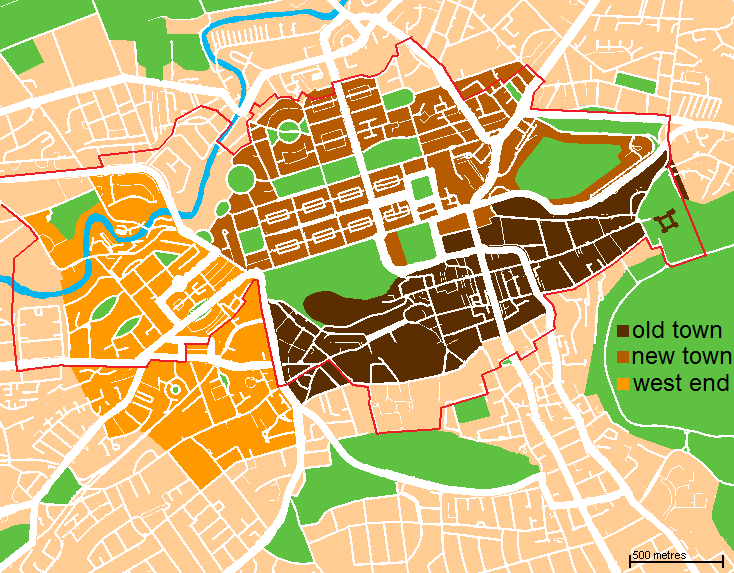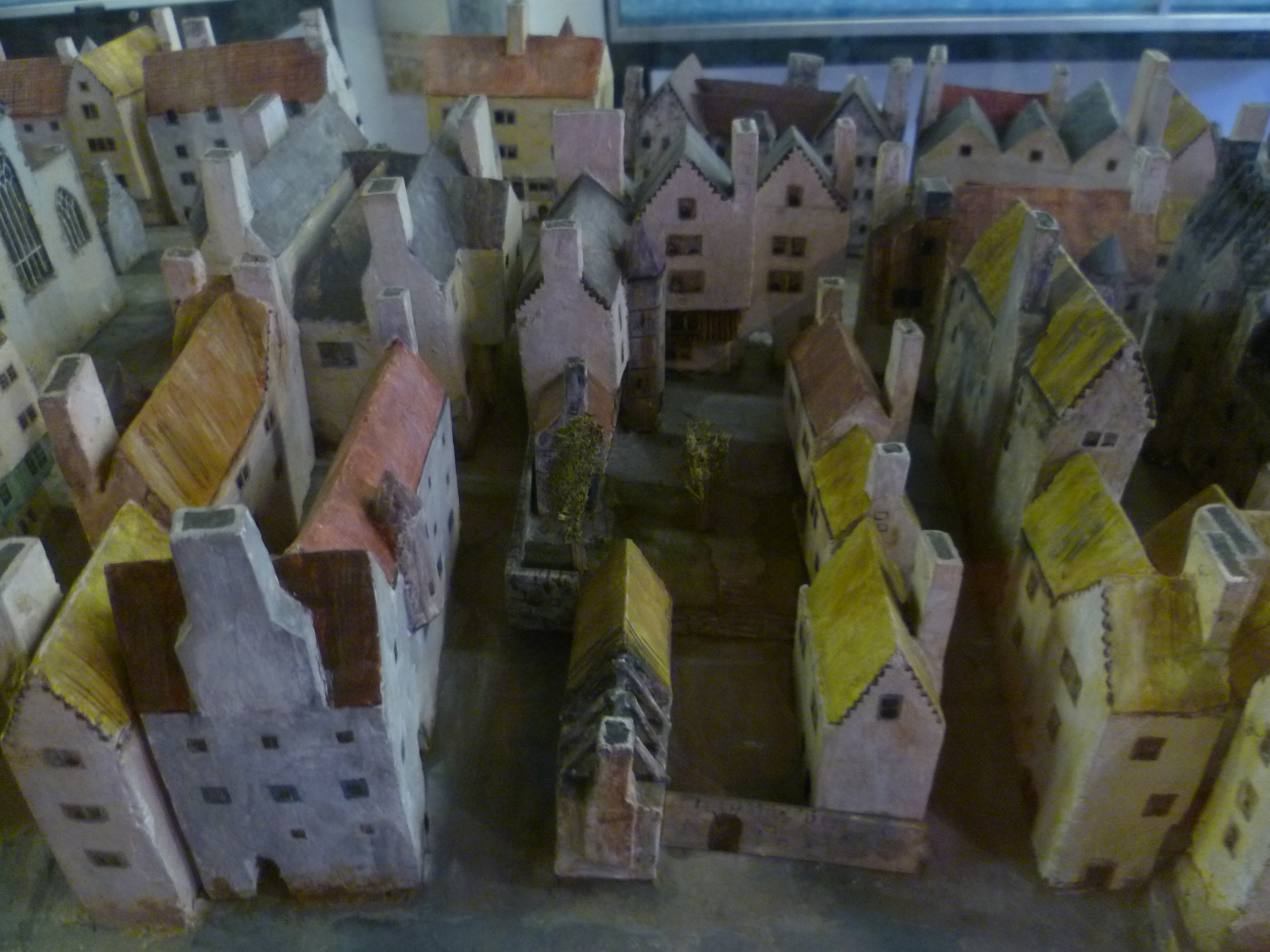|
St Cecilia's Hall
St Cecilia's Hall is a small concert hall and museum in the city of Edinburgh, Scotland, in the United Kingdom. It is on the corner of Niddry Street and the Cowgate, about south of the Royal Mile. The hall dates from 1763 and was the first purpose-built concert hall in Scotland. It is a Listed building#Scotland, Category A listed building. The hall belongs to the University of Edinburgh, and houses part of the university's collection of musical instruments, including the Russell Collection and the collections of Rodger Mirrey and Anne Macaulay. It is used for a classical chamber music concerts and, during summer, as a venue of the Edinburgh International Festival. History St Cecilia's Hall was originally commissioned by the Edinburgh Musical Society (EMS) and designed by the Scottish architect Robert Mylne (architect), Robert Mylne, who also designed Blackfriars Bridge in London. The EMS was founded in 1728, and for its first 35 years its members met in the upper hall of St Ma ... [...More Info...] [...Related Items...] OR: [Wikipedia] [Google] [Baidu] |
Edinburgh
Edinburgh is the capital city of Scotland and one of its 32 Council areas of Scotland, council areas. The city is located in southeast Scotland and is bounded to the north by the Firth of Forth and to the south by the Pentland Hills. Edinburgh had a population of in , making it the List of towns and cities in Scotland by population, second-most populous city in Scotland and the List of cities in the United Kingdom, seventh-most populous in the United Kingdom. The Functional urban area, wider metropolitan area had a population of 912,490 in the same year. Recognised as the capital of Scotland since at least the 15th century, Edinburgh is the seat of the Scottish Government, the Scottish Parliament, the Courts of Scotland, highest courts in Scotland, and the Palace of Holyroodhouse, the official residence of the Monarchy of the United Kingdom, British monarch in Scotland. It is also the annual venue of the General Assembly of the Church of Scotland. The city has long been a cent ... [...More Info...] [...Related Items...] OR: [Wikipedia] [Google] [Baidu] |
Wynd
In Scotland and Northern England, a wynd () is a narrow lane between houses. The word derives from Old Norse ''venda'' ("to turn"), implying a turning off a main street, without implying that it is curved. In fact, most wynds are straight. In many places wynds link streets at different heights and thus are mostly thought of as being ways up or down hills. Locations There are many wynds in North Yorkshire and County Durham, such as "Bull Wynd" in Darlington and Castle Wynd in Richmond, North Yorkshire. The Old Town of Edinburgh had many wynds, such as St. Mary's Wynd, Blackfriars Wynd and Niddry Wynd, until Victorian street improvements in the 19th century led them to be widened and thus, renamed "streets". Wynds feature prominently in the city centre of Aberdeen, a testament to the medieval street pattern in the city's past. Before the levelling of St. Catherine's Hill and the construction of Union Street, Back Wynd served as the main thoroughfare to and from The Green, the ... [...More Info...] [...Related Items...] OR: [Wikipedia] [Google] [Baidu] |
Ellipse
In mathematics, an ellipse is a plane curve surrounding two focus (geometry), focal points, such that for all points on the curve, the sum of the two distances to the focal points is a constant. It generalizes a circle, which is the special type of ellipse in which the two focal points are the same. The elongation of an ellipse is measured by its eccentricity (mathematics), eccentricity e, a number ranging from e = 0 (the Limiting case (mathematics), limiting case of a circle) to e = 1 (the limiting case of infinite elongation, no longer an ellipse but a parabola). An ellipse has a simple algebraic solution for its area, but for Perimeter of an ellipse, its perimeter (also known as circumference), Integral, integration is required to obtain an exact solution. The largest and smallest diameters of an ellipse, also known as its width and height, are typically denoted and . An ellipse has four extreme points: two ''Vertex (geometry), vertices'' at the endpoints of the major axis ... [...More Info...] [...Related Items...] OR: [Wikipedia] [Google] [Baidu] |
Ashlar
Ashlar () is a cut and dressed rock (geology), stone, worked using a chisel to achieve a specific form, typically rectangular in shape. The term can also refer to a structure built from such stones. Ashlar is the finest stone masonry unit, and is generally rectangular (cuboid). It was described by Vitruvius as ''opus isodomum'' or trapezoidal. Precisely cut "on all faces adjacent to those of other stones", ashlar is capable of requiring only very thin joints between blocks, and the visible face of the stone may be Quarry-faced stone, quarry-faced or feature a variety of treatments: tooled, smoothly polished or rendered with another material for decorative effect. One such decorative treatment consists of small grooves achieved by the application of a metal comb. Generally used only on softer stone ashlar, this decoration is known as "mason's drag". Ashlar is in contrast to rubble masonry, which employs irregularly shaped stones, sometimes minimally worked or selected for simi ... [...More Info...] [...Related Items...] OR: [Wikipedia] [Google] [Baidu] |
Neoclassical Architecture
Neoclassical architecture, sometimes referred to as Classical Revival architecture, is an architectural style produced by the Neoclassicism, Neoclassical movement that began in the mid-18th century in Italy, France and Germany. It became one of the most prominent architectural styles in the Western world. The prevailing styles of architecture in most of Europe for the previous two centuries, Renaissance architecture and Baroque architecture, already represented partial revivals of the Classical architecture of Roman architecture, ancient Rome and ancient Greek architecture, but the Neoclassical movement aimed to strip away the excesses of Late Baroque and return to a purer, more complete, and more authentic classical style, adapted to modern purposes. The development of archaeology and published accurate records of surviving classical buildings was crucial in the emergence of Neoclassical architecture. In many countries, there was an initial wave essentially drawing on Roman archi ... [...More Info...] [...Related Items...] OR: [Wikipedia] [Google] [Baidu] |
Andrew Bell (educationalist)
Andrew Bell (27 March 1753 – 27 January 1832) was a Scottish Anglican priest and educationalist who pioneered the Madras System of Education (also known as "mutual instruction" or the "monitorial system") in schools. He was the founder of Madras College, a secondary school in St Andrews, and helped fund other schools. Life and work Andrew Bell was born at St Andrews, in Scotland on 27 March 1753 and attended St Andrews University where he did well in mathematics and natural philosophy, graduating in 1774.Blackie 901 In 1774 he sailed to Virginia as a private tutor and remained there until 1781 when he left to avoid involvement in the war of independence. He returned to Scotland, surviving a shipwreck on the way, and officiated at the Episcopalian chapel in Leith. He was ordained deacon in 1784 and priest in the Church of England in 1785. In February 1787 he went out to India and went ashore at Madras, where he stayed for 10 years. He became chaplain to a number of regimen ... [...More Info...] [...Related Items...] OR: [Wikipedia] [Google] [Baidu] |
Freemason
Freemasonry (sometimes spelled Free-Masonry) consists of fraternal groups that trace their origins to the medieval guilds of stonemasons. Freemasonry is the oldest secular fraternity in the world and among the oldest still-existing organizations in history. Modern Freemasonry broadly consists of three main traditions: *Anglo-American Freemasonry, Anglo-American style Freemasonry, which insists that a "volume of sacred law", such as the Bible, Quran, or other religious text be open in a working Masonic lodge, lodge, that every member professes belief in a God, supreme being, that only men be admitted, and discussion of religion or politics does not take place within the lodge. *Continental Freemasonry or Liberal Freemasonry which has continued to evolve beyond these restrictions, particularly regarding religious belief and political discussion. *Co-Freemasonry, Women Freemasonry or Co-Freemasonry, which includes organizations that either admit women exclusively (such as the Ord ... [...More Info...] [...Related Items...] OR: [Wikipedia] [Google] [Baidu] |
Baptist Church In Scotland
The Baptist Union of Scotland is a Baptist Christian denomination in Scotland. It is affiliated with the Baptist World Alliance. The headquarters is north of the M8 in the Port Dundas areas of Glasgow. History From the 1650s to 1869 Baptists first arrived in Scotland with the armies of English republican Oliver Cromwell in the 1650s, who established small churches in Leith, Perth, Cupar, Ayr and Aberdeen, but they did not survive for long, partly because of their association with Cromwell (who was generally not welcomed in Scotland), but more especially as a result of strident and often violent opposition instigated and inspired by the Church of Scotland and the Parliament of Scotland which it controlled. Baptists later emerged in the 18th century—in 1750 at Keiss, where the leader was William Sinclair and the church was established on the English Baptist pattern. The group who in Edinburgh came to Baptist convictions in 1765 under the leadership of Robert Carmichael and Archi ... [...More Info...] [...Related Items...] OR: [Wikipedia] [Google] [Baidu] |
New Town, Edinburgh
The New Town is a central area of Edinburgh, the capital of Scotland. It was built in stages between 1767 and around 1850, and retains much of its original neo-classical and Georgian period architecture. Its best known street is Princes Street, facing Edinburgh Castle and the Old Town across the geological depression of the former Nor Loch. Together with the West End, the New Town was designated a UNESCO World Heritage Site alongside the Old Town in 1995. The area is also famed for the New Town Gardens, a heritage designation since March 2001. Proposal and planning The idea of a New Town was first suggested in the late 17th century when the Duke of Albany and York (later King James VII and II), when resident Royal Commissioner at Holyrood Palace, encouraged the idea of having an extended regality to the north of the city and a North Bridge. He gave the city a grant:That, when they should have occasion to enlarge their city by purchasing ground without the town, or to buil ... [...More Info...] [...Related Items...] OR: [Wikipedia] [Google] [Baidu] |
Assembly Rooms (Edinburgh)
The Assembly Rooms are meeting halls in central Edinburgh, Scotland. Originally solely a Assembly rooms, meeting place for social gatherings, it is now also used as an arts venue and for public events, including the Edinburgh Festival Fringe and the Hogmanay celebrations. There are four rooms, with moveable chairs or tables, that are used year-round and are available for private functions: Music Hall, Ballroom, Supper Room and Edinburgh Suite. The total meeting space, as remodeled in 2012, covers . The building is protected as a listed building#Scotland, category A listed building as "an outstanding example of the late 18th century public building, continuing its original use". History The Assembly Rooms opened on 11 January 1787 for the The Royal Caledonian Hunt, Caledonian Hunt Ball. The building was funded by public subscription, costing over £6,000. The prominent site at the centre of George Street, in the centre of the recently established New Town, Edinburgh, New Town, was ... [...More Info...] [...Related Items...] OR: [Wikipedia] [Google] [Baidu] |
Tenement
A tenement is a type of building shared by multiple dwellings, typically with flats or apartments on each floor and with shared entrance stairway access. They are common on the British Isles, particularly in Scotland. In the medieval Old Town, Edinburgh, Old Town, in Edinburgh, tenements were developed with each apartment treated as a separate house, built on top of each other (such as Gladstone's Land). Over hundreds of years, custom grew to become law concerning maintenance and repairs, as first formally discussed in James Dalrymple, 1st Viscount of Stair, Stair's 1681 writings on Scots property law. In Scotland, these are now governed by the Tenements (Scotland) Act 2004, Tenements Act, which replaced the old Law of the Tenement and created a new system of common ownership and procedures concerning repairs and maintenance of tenements. Tenements with one- or two-room flats provided popular rented accommodation for workers, but in some inner-city areas, overcrowding and maintena ... [...More Info...] [...Related Items...] OR: [Wikipedia] [Google] [Baidu] |
List Of Closes On The Royal Mile
The Old Town, Edinburgh, Old Town in Edinburgh consisted originally of the city's main street, now known as the Royal Mile, and the small alleyways and courtyards that led off it to the north and south. These were usually named after a memorable occupant of one of the apartments reached by the common entrance, or a trade plied by one or more residents. Generically such an alleyway is termed a close , a Scots language, Scots term for Alley#Other terms, alleyway, although it may be individually named close, entry, court, or wynd. A close is private property, hence gated and closed to the public, whereas a wynd is an open thoroughfare, usually wide enough for a horse and cart . Most slope steeply down from the Royal Mile creating the impression of a herring-bone pattern formed by the main street and side streets when viewed on a map. Many have steps and long flights of stairs. As a result of Edinburgh coming under frequent attack during Military history of Scotland, conflicts in ... [...More Info...] [...Related Items...] OR: [Wikipedia] [Google] [Baidu] |








